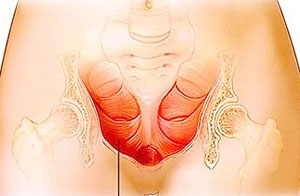Inflammatory diseases constitute the main category of pathological processes occurring in urology. Diseases associated with the development of inflammation in the organs of the urinary system often have a pronounced clinical picture and respond well to treatment. With insufficiently effective treatment, such pathologies can be complicated, causing secondary inflammatory processes. These complications include paracystitis - an inflammatory disease of fatty tissue located around the bladder. Read about the features of the clinical picture, diagnosis and treatment of paracystitis at estet-portal.com.
Clinical picture and methods of treatment of paracystitis
There are primary and secondary paracystitis, while the primary disease occurs quite rarely.
Secondary paracystitis develops as a result of infection penetrating into the paravesical tissue from the bladder and adjacent organs, as well as from a distant purulent focus by the hematogenous route or from the intestine - by the lymphogenous route.
Depending on the localization of the inflammatory process, paracystitis is divided into anterior and posterior cystitis. Total paracystitis develops with purulent fusion of the entire perivesical fatty tissue.
Paracystitis:
- clinical picture of paracystitis: characteristic symptoms;
- basic instrumental methods for diagnosing paracystitis;
- conservative and surgical treatment of paracystitis.
Clinical picture of paracystitis: characteristic symptoms
 The clinical picture of paracystitis is characterized by the appearance of symptoms typical of any inflammatory process. The patient's body temperature rises to 39-40 ° C, chills, nausea and vomiting, weakness and fatigue are noted. Paracystitis is characterized by the appearance of acute pain in the bladder area, as well as dysuric manifestations. The release of a large amount of pus in the urine, after which the patient's condition improves significantly, indicates a rupture of the abscess into the bladder. With posterior paracystitis, the patient may complain of a painful act of defecation. In thin patients, it is possible to palpate a painful triangular or oval infiltrate above the pubis.
The clinical picture of paracystitis is characterized by the appearance of symptoms typical of any inflammatory process. The patient's body temperature rises to 39-40 ° C, chills, nausea and vomiting, weakness and fatigue are noted. Paracystitis is characterized by the appearance of acute pain in the bladder area, as well as dysuric manifestations. The release of a large amount of pus in the urine, after which the patient's condition improves significantly, indicates a rupture of the abscess into the bladder. With posterior paracystitis, the patient may complain of a painful act of defecation. In thin patients, it is possible to palpate a painful triangular or oval infiltrate above the pubis.
The main instrumental methods for diagnosing paracystitis
Diagnosis of paracystitis includes the following tests:
- cystoscopy - the depression of the bladder wall into its lumen, hyperemia and bullous edema of the bladder mucosa are determined. If the abscess breaks into the wall of the bladder, a fistula is visualized, from which pus is released;
- cystography determines the deformation of the bladder due to its compression by the inflammatory infiltrate, a decrease in its size and uneven contours;
- ultrasound examination makes it possible to determine the focus of purulent fusion in the perivesical fatty tissue. In chronic paracystitis, ultrasound shows a heterogeneous echostructure of the fatty tissue of the perivesical space.
Conservative and surgical treatment of paracystitis
The treatment of paracystitis depends on the form of the disease and the stage of the pathological process. In the infiltrative stage, conservative treatment is effective. The patient is prescribed bed rest, applying cold to the infiltrate area, as well as antibiotic therapy. Physiotherapeutic methods of treating paracystitis also have a good effect. In the case of the formation of a perivesical abscess, surgical intervention is necessary. The anterovesical abscess is dissected by suprapubic access and drained widely, and the posterior vesical abscess is drained through the anterior opening. With a timely diagnosed process and effective treatment, it is possible to predict the complete recovery of the patient.






Add a comment